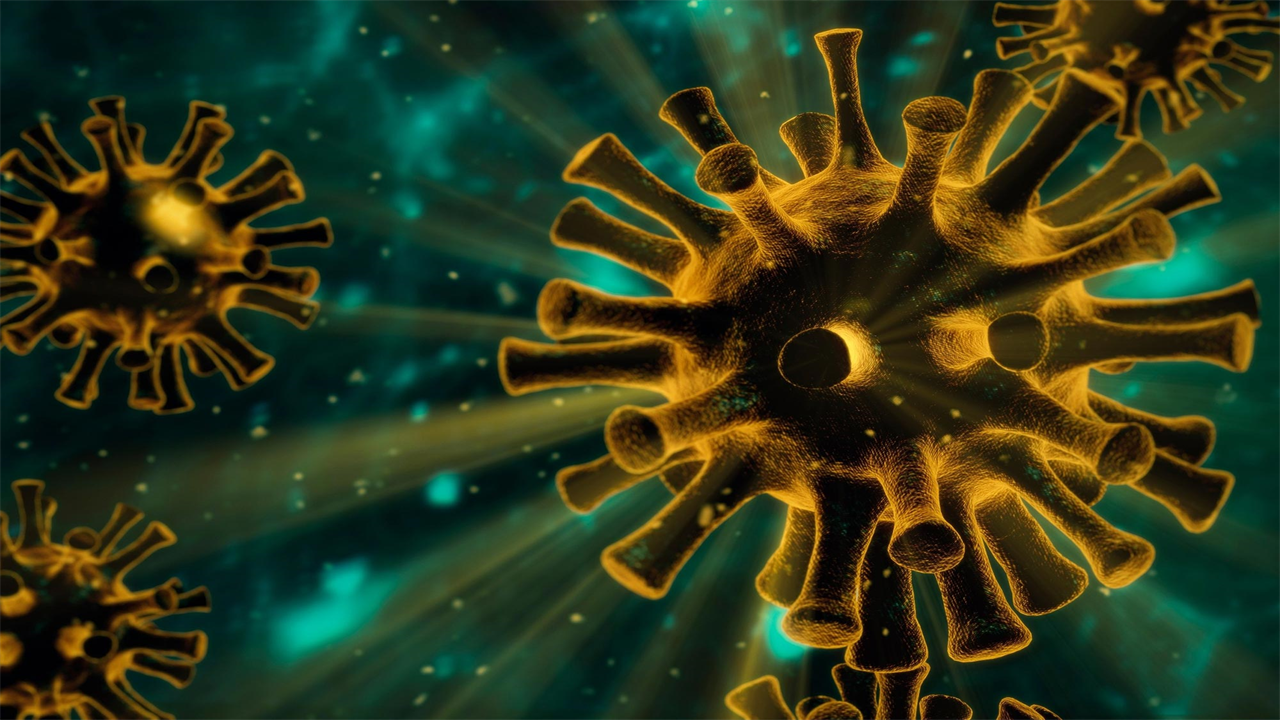COVID Delta and Delta Plus Variants Evade the Antibody Response
0 View
Share this Video
- Publish Date:
- 21 October, 2021
- Category:
- Covid
- Video License
- Standard License
- Imported From:
- Youtube
Tags

Cell culture studies show increased lung cell uptake of the SARS-CoV-2 variants Delta and Delta Plus and decreased inhibition by antibodies.
The emergence of new SARS-CoV-2 variants that can spread rapidly and undermine vaccine-induced immunity threatens the end of the COVID-19 pandemic.
The delta variant (B.1.617.2) originated in India and then spread worldwide in a short time. Also in Germany, almost all recent infections are the result of this variant. In addition to Delta, so-called Delta Plus sub-variants have been observed, which contain additional mutations that can make them more dangerous.
A research team led by Stefan Pöhlmann and Markus Hoffmann from the German Primate Center – Leibniz Institute for Primate Research in Göttingen and colleagues from the Hannover Medical School, the University of Göttingen Medical Center and the Friedrich-Alexander University of Erlangen-Nürnberg investigated why the Delta variant spreads as efficiently and whether Delta Plus viruses are more dangerous.
They were able to show that Delta and Delta Plus infect lung cells with a higher efficiency than the original virus. In addition, one of the four antibodies used to treat COVID-19 was ineffective against Delta, and Delta Plus was even resistant to two therapeutic antibodies. Similarly, antibodies generated after vaccination with the BioNTech-Pfizer and Oxford-AstraZeneca vaccines were also less effective against Delta and Delta Plus compared to the parent virus. In contrast, Delta and Delta Plus were similarly inhibited, suggesting that Delta Plus may not pose a greater risk to vaccinated individuals than Delta.
Finally, subjects vaccinated first with Oxford-AstraZeneca and then with BioNTech-Pfizer were found to have significantly more antibodies that inhibited Delta than subjects vaccinated twice with Oxford-AstraZeneca. The combination of two vaccines can thus induce a particularly strong immune protection against SARS-CoV-2 variants (The Lancet, Cell Reports, Cell Mol Immunol).
A) Summary of special properties of SARS-CoV-2 Delta and Delta Plus variants compared to the virus circulating until the start of the pandemic (wild-type virus). B) Heterologous vaccination with the vector-based vaccine from Oxford-AstraZeneca and the mRNA-based vaccine from BioNTech-Pfizer. Induces the production of more neutralizing antibodies to the Delta variant than homologous (two-shot) vaccination with Oxford-AstraZeneca. Credit: Markus Hoffmann
Currently, more than 99 percent of SARS coronavirus 2 infections caused in Germany are due to the Delta variant, according to the Robert Koch Institute. Using cell culture experiments, a team of researchers led by Stefan Pöhlmann and Markus Hoffmann was able to demonstrate that Delta is better able to invade lung cells compared to the original virus (the virus that circulated during the early phase of the pandemic). In addition, Delta is better at fusing infected lung cells with uninfected cells.
“It is conceivable that by fusing cells in the airways, the Delta variant can spread more efficiently and cause more damage. This could contribute to a more severe course of COVID-19,” hypothesizes Arora Prerna, scientist at the German Primate Center and lead author of two studies specifically targeting the Delta and Delta Plus variants.
Monoclonal antibodies are used to treat COVID-19. These antibodies are proteins produced by genetic engineering. Unlike our immune system, which produces a wide variety of antibodies against pathogens during infection, only individual antibodies or combinations thereof are used for COVID-19 therapy. The team led by Stefan Pöhlmann and Markus Hoffmann studied four of these antibodies. They found that Delta is resistant to the antibody bamlanivimab, while Delta Plus is resistant to two antibodies, bamlanivimab and etesevimab, which are used in combination to treat COVID-19 patients.
Delta and Delta Plus were less well inhibited (neutralized) by antibodies from infected and vaccinated individuals compared to the parent virus and this likely contributed to the rapid spread of Delta. A direct comparison of Delta and Delta Plus showed that both viruses were neutralized similarly. “This means that vaccination is likely to provide comparable protection against Delta and Delta Plus, and that Delta Plus is not significantly more dangerous than Delta,” says Stefan Pöhlmann.
The BioNTech-Pfizer vaccine is the most widely used vaccine in Europe, followed by the Oxford-AstraZeneca vaccine. Due to very rare side effects after vaccination with Oxford-AstraZeneca, it is recommended in Germany and other countries to use BioNTech-Pfizer for the second vaccination in people who have already received a first injection of Oxford-AstraZeneca. This strategy is called heterologous vaccination.
“Our studies show that heterologous vaccination induces significantly more neutralizing antibodies to Delta than two vaccinations with Oxford-AstraZeneca. Individuals who have received such a heterologous vaccination may have very good immune protection against Delta and Delta Plus,” says Markus Hoffmann.
“Our results are consistent with the observation that vaccination efficiently protects against the development of serious diseases after infection with the Delta variant, but often fails to completely suppress infection. In the light of efficient protection against serious diseases, the aim is to achieve a high vaccination coverage. This can prevent the healthcare system from becoming overloaded with an increased spread of Delta and closely related viruses during the winter months,” says Stefan Pöhlmann.
Reference: “B.1.617.2 penetrates and fuses lung cells with increased efficiency and evades antibodies induced by infection and vaccination” by Prerna Arora, Anzhalika Sidarovich, Nadine Krüger, Amy Kempf, Inga Nehlmeier, Luise Graichen, Anna-Sophie Moldenhauer, Martin S. Winkler, Sebastian Schulz, Hans-Martin Jäck, Metodi V. Stankov, Georg MN Behrens, Stefan Pöhlmann, and Markus Hoffmann, September 27, 2021, Cell Reports.
DOI: 10.116/j.celrep.2021.109825










